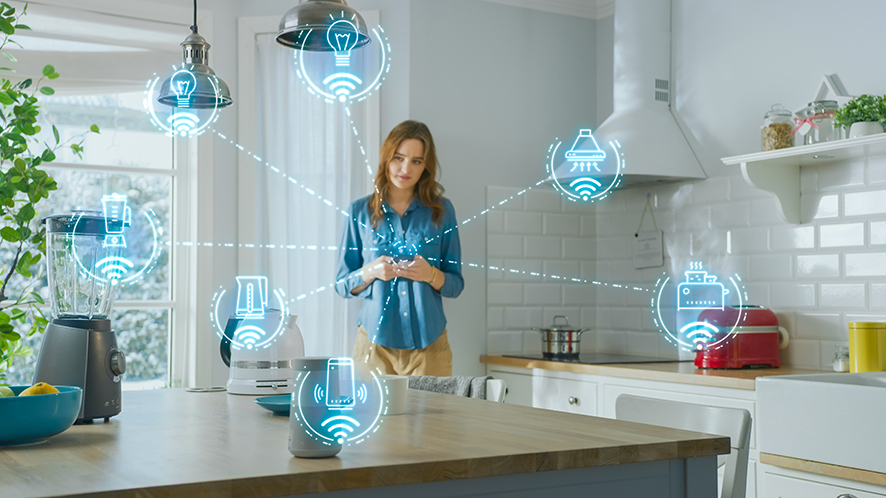Ambient Computing: Understanding the Technology and Its Applications
2023/03/09

Image by Gorodenkoff from Shutterstock
Ambient Computing: Understanding the Technology and Its Applications
The invention of smart devices and the Internet of Things (IoT) has led to a new era of computing that promises to transform the way we interact with technology. One of the most exciting areas of development in this field is ‘ambient computing’ which has been identified as one of the top emerging technological trends this year.
What is Ambient Computing?
Ambient computing is a type of computing application that seamlessly integrates technology into our everyday lives. It aims to make technology disappear into the background, becoming a natural and intuitive part of our daily routines. Unlike traditional computers that rely on screens and interfaces, ambient computing uses sensors, smart devices, other interfaces, and machine learning algorithms to learn the user's behaviour and patterns, anticipating their needs and providing relevant information and services at the right time. In other words, ambient computing helps create an environment which is aware of users' needs and preferences throughout the day and responds accordingly.
Ambient computing has been available for some time now, although many may have yet to acknowledge its presence in their daily lives. As mentioned above, one of the more defining characteristics of ambient computing is that it operates in the background, providing information and services without requiring the user's input. Here are some examples of ambient computing applications:
Voice assistants
Voice assistants like Amazon's Alexa, Google Nest, and Apple's Siri are examples of ambient computing that are widely used and well-known. They operate by detecting specific words or phrases that signal the beginning of a user’s command or request. These assistants rely on natural language processing and machine learning to understand voice commands and offer a range of services, such as playing music, providing information, and controlling other smart devices in the home.
For instance, you can use voice commands to turn on the lights, adjust the thermostat, turn on the coffee maker or even start a vacuum cleaner. The simplicity and ease of using voice assistants have made them a popular choice for people who want to incorporate technology into their daily lives.
Smart homes
Smart homes are another example of ambient computing. By integrating sensors and smart devices into the environment, smart homes use ambient computing to seamlessly integrate technology into daily routines, making lives easier and more efficient. For example, with smart thermostats, like Amazon's Smart Thermostat, the temperature can be automatically adjusted based on daily schedules, optimising comfort and reducing energy consumption.
The benefits of smart homes go beyond mere convenience; they have the potential to save energy, reduce costs, and contribute to a more sustainable future. Furthermore, the popularity of smart homes was reflected in the smart home market's growth, with a projected revenue of about US$ 117.60 billion in 2022 and an expected annual growth rate of 12.47% from 2022 to 2027, resulting in a predicted projected market volume of US$ 222.90 billion by 2027.
Smart cities
Smart cities provide another example of ambient computing, where technology is used to improve the efficiency, sustainability, and quality of life in urban areas. By integrating sensors, cameras, and other smart devices throughout the city, smart cities can collect and analyse vast amounts of data to optimise everything from traffic flow to waste management.
For example, smart traffic management systems can use real-time data to adjust traffic signals and reduce congestion, while smart waste management systems help optimise resources, reduce costs, create cleaner streets and better working environments, lower carbon emissions, and increase recycling rates by making use of real-time data.
Additionally, smart cities can also help improve public safety by using technologies such as smart streetlights, traffic signals, intersections, emergency vehicles, and buildings, all of which use sensors and cameras to gather and analyse data, leading to faster emergency response times, improved traffic flow, and reduced accidents and injuries. As the population of urban areas continues to grow, the need for smart cities and ambient computing solutions will continue to increase.
These examples show that ambient computing is an advancing field that will assist in seamlessly integrating technology into daily lives, enhancing comfort and efficiency. As the technology continues to mature, it is bound to become more user-friendly and intuitive, providing users with more personalised and relevant services.